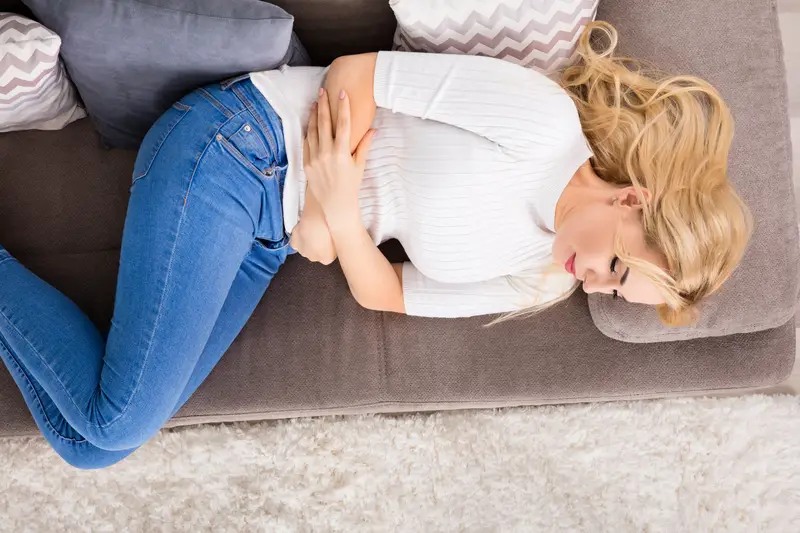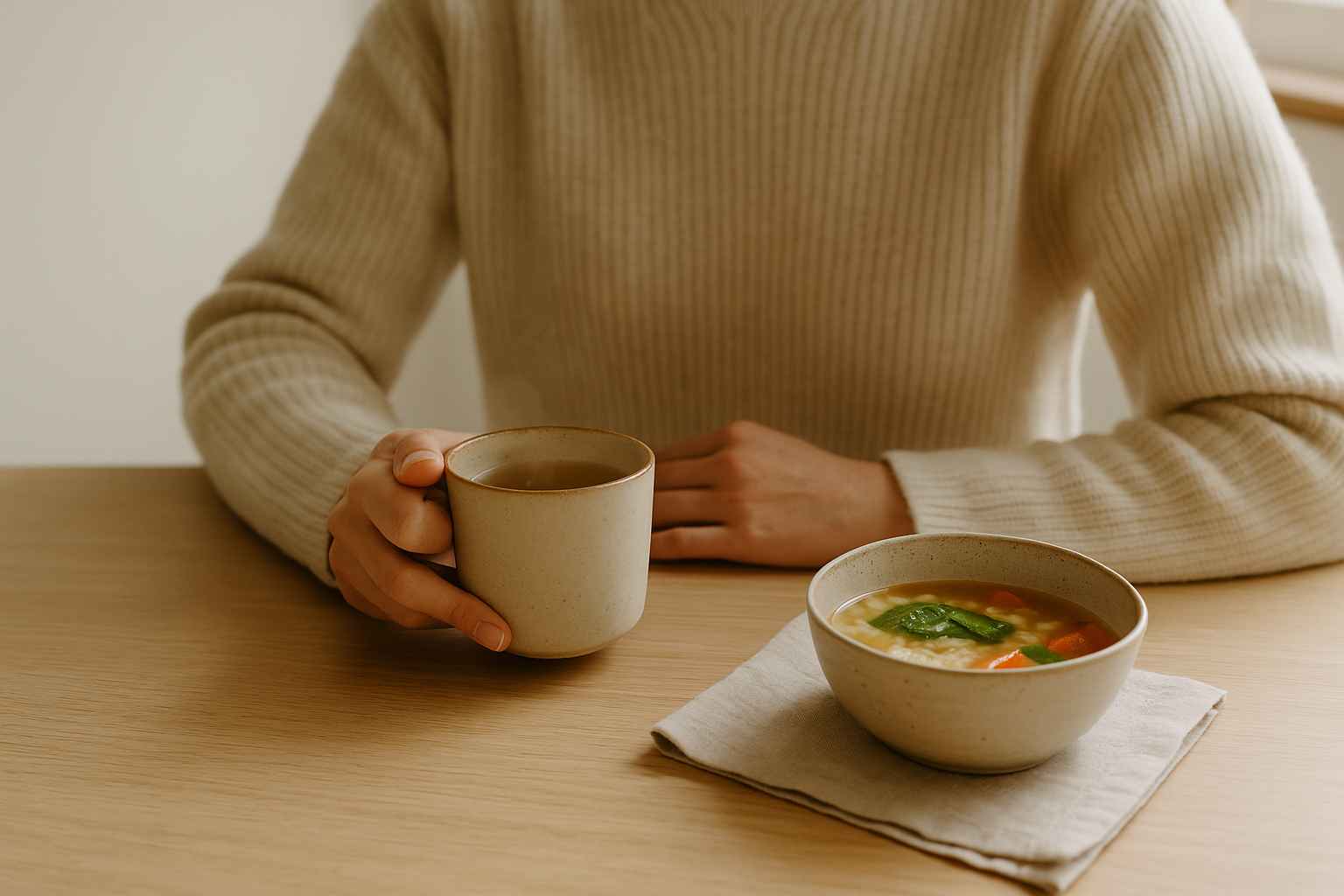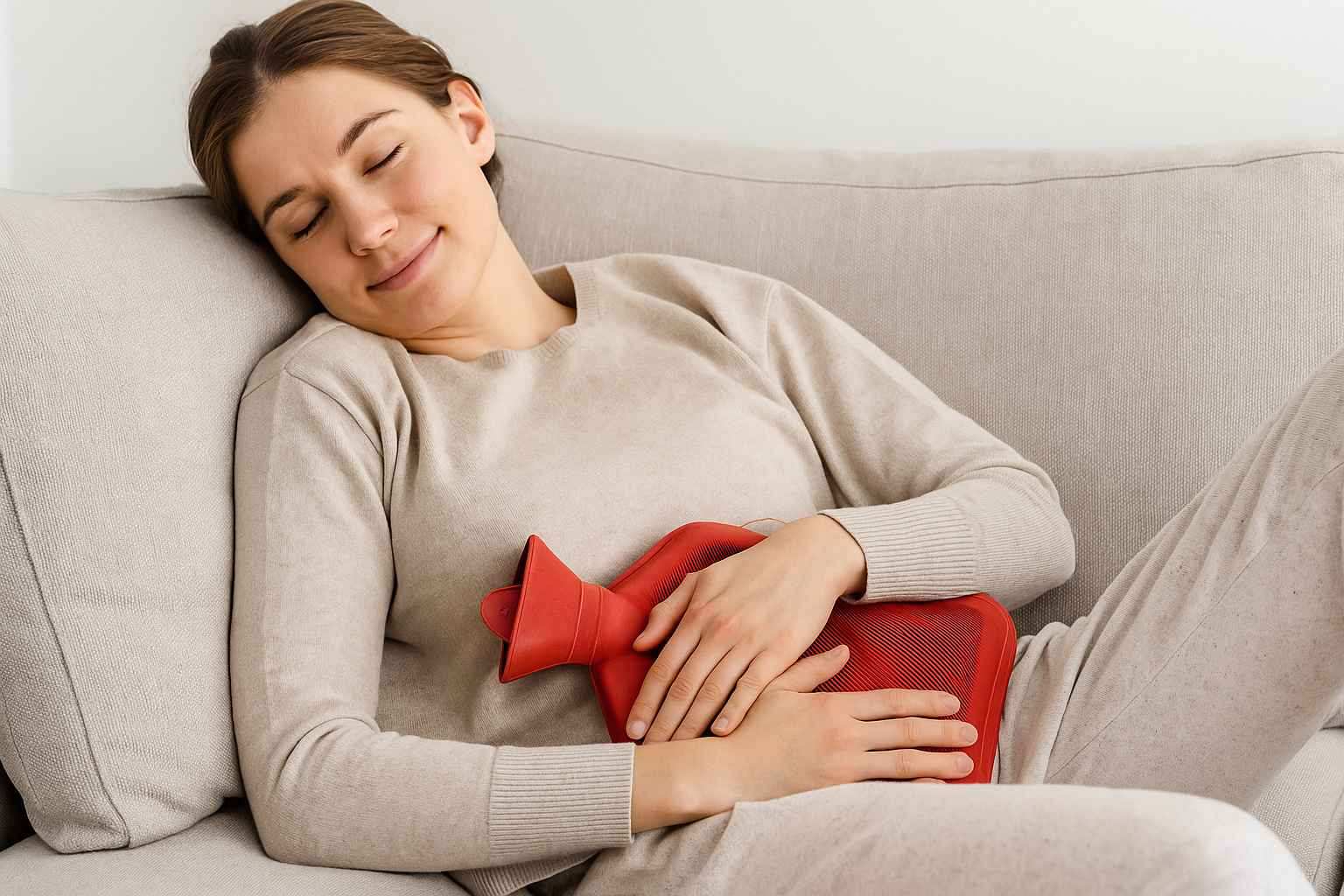Gastritis is an inflammation of the stomach lining caused by bacterial infection, excessive alcohol use, chronic stress, or the regular use of pain relief medication such as aspirin and ibuprofen. Older adults are at higher risk of gastritis because the stomach lining tends to thin with age, leaving it susceptible to infection. Overuse of alcohol or pain medication erodes the stomach lining, leaving the stomach vulnerable to digestive juices. Cancer treatments, including radiation and chemotherapy, also increase your risk of gastritis. Infection by Helicobacter pylori, a bacteria that makes its home in the stomach’s mucous lining, can lead to stomach ulcers or cancer in some people if left untreated.
Scientists in Taiwan have demonstrated that structural abnormalities in the gastric areas are related to lower meridian energy. While further studies are required, their findings suggest that enhancing meridian energy through acupuncture for stomach inflammation might improve gastric health. Use the relevant acupressure points for stomach inflammation to bring balance to the body, reduce stress and gastric pain, and lower your risk of infection.
What Are The Symptoms Of Stomach Inflammation?
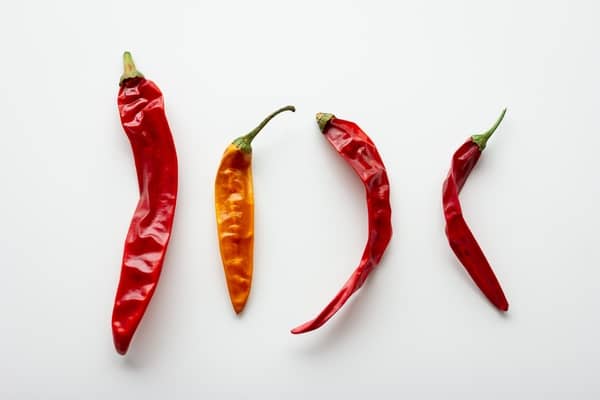
The most common symptoms of gastritis include nausea, abdominal pain, and indigestion. You might experience a loss of appetite or feel discomfort when eating. If a more severe case of gastritis leads you to vomit blood or produce black, tarry stools, you should consult with your physician immediately.
In most cases, gastritis will usually disappear once the underlying condition is addressed. Hot and spicy foods may cause irritation for some people, and eliminating lactose or gluten can provide relief from symptoms of stomach inflammation. Applying acupuncture for stomach inflammation can effectively inhibit the intraesophageal acid reflux in gastroesophageal reflux (GER) patients. If your gastritis is caused by a bacterial infection, your doctor may prescribe antibiotics alongside other treatments.
How Can Acupressure Help With Stomach Inflammation?
Many kinds of gastrointestinal issues are related to autonomic nervous system disorders. Stimulation of the parasympathetic nervous system increases salivation and digestion, decreases heart rate, and inhibits adrenaline production. Stimulation of the sympathetic nervous system has the opposite effect.
When you feel stressed or nervous, the sympathetic nerves become dominant, increasing adrenaline production and reducing the function of the gastrointestinal tract and salivary glands. Acupuncture for stomach inflammation and moxibustion treatment can have a regulatory effect on the entire autonomic nervous system, providing relief from digestive conditions and stomach pain.
A systematic review of articles published over the past decade relating to acupuncture and gastrointestinal function concluded that stimulation at PC-6 or ST-36, both vital acupressure points for stomach inflammation, significantly enhanced gastric motility and protected against gut injury and mucosal barrier erosion in both rats and humans.
Even regarding stomach inflammation caused by the h.pylori bacterium, acupuncture treatment still plays a role. Researchers at the Dezhou Third People’s Hospital of Chinese Medicine have shown that acupuncture is more effective than antibiotics in treating gastric mucosa inflammation. Patients treated with antibiotics had a 75% effective rate, while another group receiving acupuncture had a 91.67% effective rate. The acupressure points included BL-21 (Weishu), Ren-12 (Zhong Wan), Pc-6 (Nei Guan), and ST-36 (Zu San Li).
What Are The Acupressure Points For Stomach Inflammation?
In Traditional Chinese Medicine (TCM), gastrointestinal issues such as indigestion, upset stomach, and abdominal pain are related to the “spleen.” As understood in Chinese medicine, the spleen is not anatomically synonymous with the organ as conceived in western medicine. Instead, it is the “digestive fire” that heats and transforms food into nutrients, providing the source for vital energy and blood flow. It includes the entire spleen-stomach channels that control the digestive system.
The acupressure points for stomach inflammation are related to the spleen and stomach meridians (for gastrointestinal function) and the liver meridian (for stimulation or suppression of the autonomic nerves).
Acupoint: Ren-12 (Other Names: The Conception Vessel-12/Zhong Wan/Middle Epigastrium)
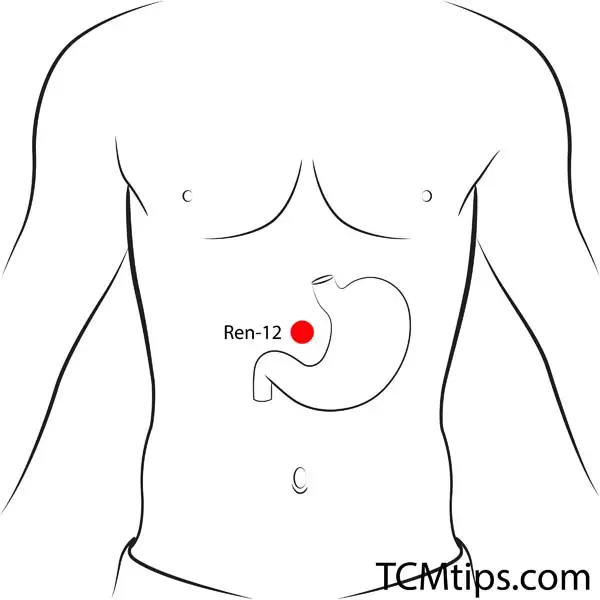
In Traditional Chinese Medicine, the Zhong Wan harmonizes the spleen and the stomach. In addition to being one of the acupressure points to increase estrogen, acupuncture treatment at Ren-12 enhances the functioning of the internal organs and is effective against stomach pain, dyspepsia, and acid regurgitation.
Acupressure may be an effective treatment for acute erosive gastritis, a kind of inflammation that causes lesions in the mucous membranes of the stomach. Using moxibustion treatments at acupoints Ren-12 and ST-36, scientists were able to significantly reduce gastric lesions in Wistar rats. In the same study, treatments applied at non-relevant acupoints (in a control group) showed no significant effect.
You can locate the Zhong Wan by measuring four finger-widths up from the navel. Apply gentle pressure by pressing with your finger while taking deep breaths.
Acupoint: PC-8 (Other Names: Pericardium-8/Lao Gong/Palace of Toil)
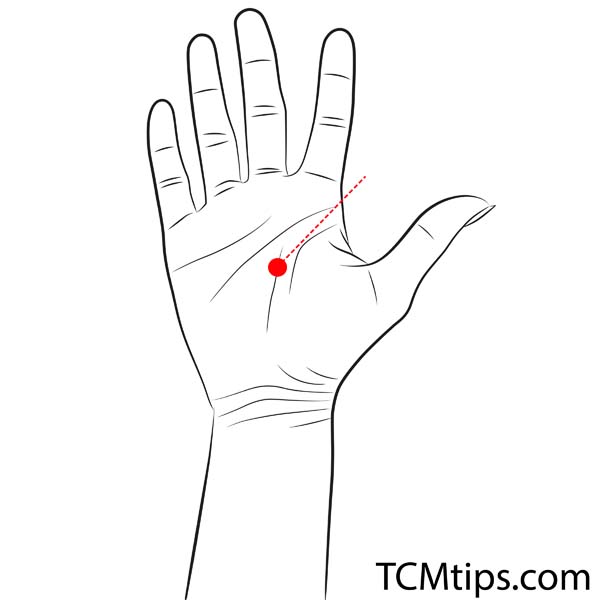
Known as the “Palace of Toil,” this acupoint on the pericardium meridian clears heat from the heart and calms the Shen, and plays a vital role in acupressure for heart health. As well as being effective for heartburn, the Lao Gong promotes a general calming effect.
The Lao Gong harmonizes the stomach and brings balance to the gastric-intestinal system, making it a valuable point for acupuncture for stomach inflammation. Acupressure at PC-8 may help to alleviate nausea or motion sickness and provide a cure for constipation.
The PC-8 is in the middle of the palm, between the index and middle fingers. Massage the acupressure point by pressing with your thumb in a circular motion. Apply firm pressure—it’s normal to feel some discomfort.
Acupoint: BI-20 (Other Names: Urinary Bladder-20/Pi Shu/Spleen Transporter)
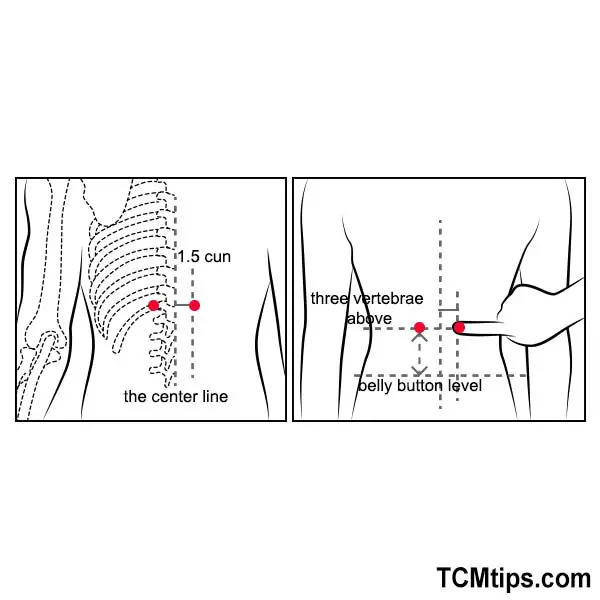
This powerful acupressure point, known as the “Spleen Transporter,” improves blood circulation and promotes the flow of energy in the spleen and the stomach. Along with being one of the primary acupressure points for ovary cysts, BL-20 provides effective relief from the symptoms of jaundice, diarrhea, and stomach ache.
In a study published in the World Journal of Acupuncture in Sept. 2019, moxibustion at acupoints including Bl-20 and Bl-21, both important acupressure points for stomach inflammation, improved the survival rates of rats with gastric cancer.
Bl-21 is located slightly below the center of the back, at the lower edge of the 11th thoracic vertebrae, two finger-widths away from the spine.
Acupoint: Bl-21 (Other Names: Urinary Bladder-21/Wei Shu/Stomach Transporter)
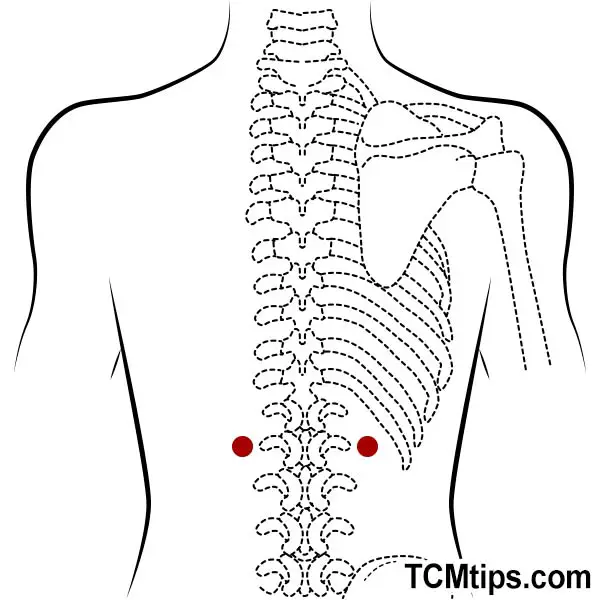
As its name suggests, the “Stomach Transporter” works in conjunction with the “Spleen Transporter” to balance the flow of energy in the gastrointestinal system. Acupressure at Bl-21 can provide relief from a whole host of gastrointestinal conditions, including indigestion, diarrhea, abdominal distention, nausea, and constipation.
Located two finger-widths out from the lowest point of the twelfth thoracic vertebrae, Bl-21 is also one of six easy back pressure points for a massage you can give to (or, better still, receive from) your partner. Place two fingers on the acupressure point and apply gentle pressure in a circular motion.
You’ll notice that Bl-21 is often taut when you are suffering from stomach pain or indigestion.
Acupoint: PC-6 (Other Names: Pericardium-6/Nei Guan/Inner Pass)
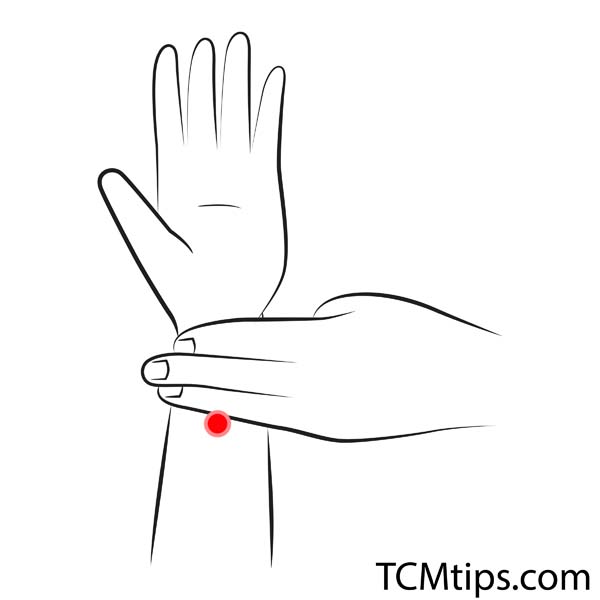
In Traditional Chinese Medicine, the Neiguan is a treasured acupressure point used to treat a wide range of medical conditions. Its effectiveness in treating coronary heart diseases has been demonstrated in clinical studies, making PC-6 one of the essential acupressure points for heart valves.
Acupressure at the Neiguan is used as a natural anti-emetic in Eastern countries, and many studies have pointed to its effectiveness in relieving gastrointestinal symptoms related to nausea. A 2005 study suggested that acupressure at PC-6 might have a normalizing effect on impaired gastric myoelectrical activity in healthy humans. An earlier study from 1995 concluded that the Nei Guan acupressure massage reduced the severity of symptoms of visually-induced motion sickness and gastric tachyarrhythmia.
You’ll find PC-6 on the palm side of the wrist, around three finger-widths up from the wrist crease. Press firmly here with your thumb until you feel relief.
Acupoint: ST-36 (Other Names: Stomach-36/Zu San Li/Leg Three Miles)
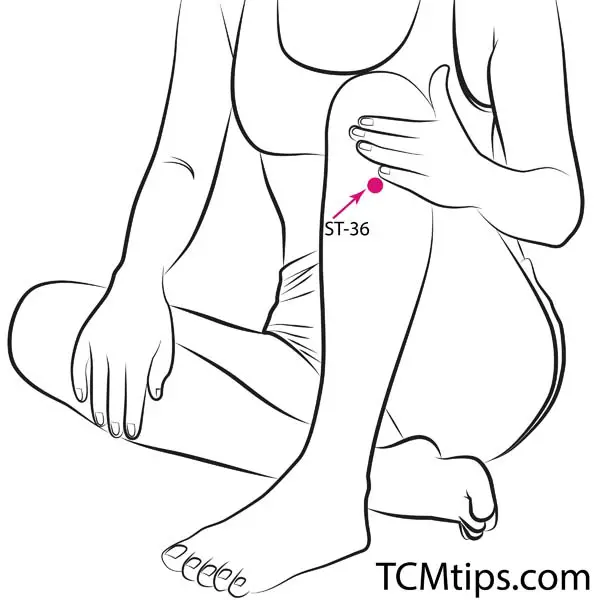
This acupoint on the stomach meridian provides effective relief from indigestion and stomach upset, making it one of the vital acupressure points for lower abdominal pain.
Located around four finger-widths below the knee, ST-36 is also employed in acupressure for knee inflammation and leg pain.
Acupressure at ST-36 strengthens the body, expelling dampness, wind, and cold and reducing inflammation. Sit in a comfortable position and press on the point using the thumb, applying deep pressure on the muscle.
Acupoint: ST-34 (Other Names: Stomach-34/Liang Qiu/Ridge Mound)
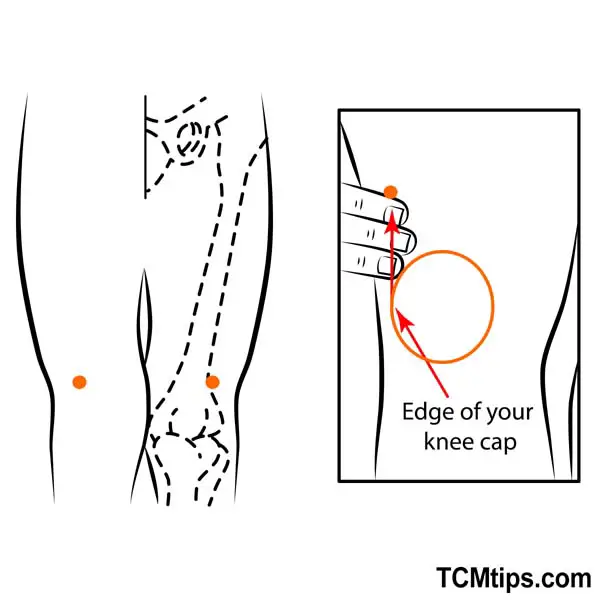
The Ridge Mound is the second of the helpful acupressure points for stomach inflammation located on the stomach meridian. Acupressure at ST-34 calms the stomach and removes obstructions in the channel, providing relief from gastric pain, dyspepsia, and diarrhea.
ST-34 is located around three finger-widths above the knee cap and, besides its role in acupuncture for stomach inflammation, is considered one of the pressure points for thigh pain. Applying firm pressure every day with your finger or thumb may help prevent damage to the muscles along the stomach meridian.

Try our Anti-Aging Gua Sha Tool designed to bring out your skin’s natural glow.
Best Gua Sha Product- Anti-Aging: The tool is designed to target 11 specific aging signs such as wrinkles and sagging skin. By following the 7-step routine, users can improve skin firmness and reduce fine lines naturally.
- Enhances Skincare Routine: It works effectively with serums and lotions, boosting absorption and efficacy of skincare products.
- Visible Skin Improvement: Users can expect a smoother complexion, reduced puffiness, and a more youthful appearance.
 P. Sze
P. Sze 

